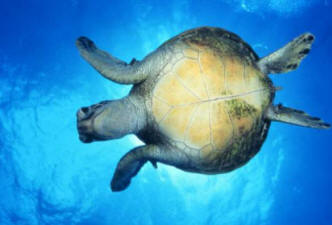◦Home
![]() Adaptations
Adaptations![]()
Chelonia mydas
Young turtles living in the open-ocean feed on small invertebrate animals. Once they are older and leave the open-ocean to reside in costal waters, they can switch from a carnivorous diet to a herbivorous diet. In order to do this, over time they undergo modifications to their digestive system. Their large intestine nearly doubles in length so that it is able to properly digest the plant material. Along with a larger colon, there are also valves that slow the rate of passage of the food for more absorption.
Green Sea turtles have a mutualistic relationship with symbiotic bacteria in their gut. These bacteria break down cellulose so that nutrients are easily digested. Since juvenile turtles still need to absorb the plant nutrients, but do not have these bacteria in their system yet they eat the feces from their parents and then utilize the bacteria.
Occasionally, green sea turtles and manatees compete for food resources. Green sea turtles are at an advantage when feeding areas are restricted by low water; therefore, the manatees can't compete.
Each flipper has a single claw. A second claw may be present in young, but this is still uncommon. These claws are used to scrape off commensal organisms such as barnacles. It is important that these organisms be removed while they are still trying to settle on the shell, because once they are securely attached they can't be scraped off.
Created by:
Melissa
Martinelli
Last Updated: April 27th, 2007
